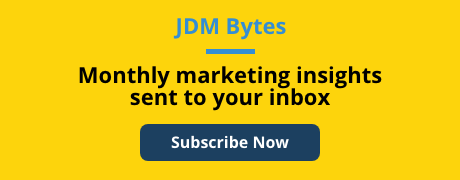Google’s upcoming opt-out feature for cookie tracking on Chrome signals a new era for digital advertisers. While third-party cookies are still available for users who don’t opt out, the reality is that many will choose to limit data collection. This makes first-party data (1PD) more critical than ever. Collecting and leveraging 1PD effectively will be key to maintaining performance, particularly as the landscape becomes increasingly privacy-focused.
Why First-Party Data Is the Future
With the growing push for user privacy, relying on third-party cookies is becoming a short-term solution. Google's opt-out prompt is just the latest in a series of moves across the digital ecosystem to reduce reliance on third-party tracking. Many users are becoming more privacy-conscious, and the importance of collecting consented first-party data is only going to grow.
This shift means businesses must prioritize building strategies around 1PD, which can provide a more accurate, user-permitted data source. First-party data comes directly from your audience—whether through website interactions, form submissions, or CRM systems—and it allows you to build meaningful, privacy-compliant marketing strategies.
Tag Diagnostics: The Backbone of 1PD
Ensuring the accuracy and integrity of your first-party data collection is essential, and this is where Tag Diagnostic tools come into play. These tools are vital for troubleshooting any issues with tag implementation, ensuring that data is collected properly and is actionable. With the right tag structure, you can build a robust 1PD framework that fuels personalized and data-driven marketing without relying on third-party cookies.
With Google’s upcoming changes, having Tag Diagnostic tools in place empowers marketers to identify any tagging issues that could lead to inaccurate data. This level of precision helps businesses avoid wasted spend and ensures that the data being used for campaign optimization is reliable and actionable.

Consent Management Platforms (CMPs) and Google’s Opt-Out Prompt
As Google prepares to roll out its opt-out prompt for cookie tracking, Consent Management Platforms (CMPs) will play an increasingly important role. CMPs streamline the process of managing user consent, making it easier for businesses to comply with privacy regulations while maintaining the ability to collect data where allowed.
Implementing CMPs now means that when users begin receiving these opt-out prompts, you’ll be prepared to track data from those who’ve given consent while respecting the preferences of others. This not only keeps you compliant but also helps you optimize campaigns based on data that’s both valuable and ethical.
CMPs and Consent Mode: Bridging the Gap
CMPs can also be integrated with Google’s Consent Mode, a feature that helps adjust how tags behave based on the user’s consent choices. By syncing your CMP with Consent Mode, you ensure that your tags respect user preferences while continuing to track essential metrics where allowed. This setup allows you to maintain more accurate campaign measurement and optimization, even in a world where data tracking is increasingly restricted.
With these integrations in place, marketers can build strategies that align with both their business goals and their users' privacy concerns, leading to higher-quality data and, ultimately, better campaign performance.
The Takeaway: Prepare Now
Google’s upcoming cookie opt-out prompt is just the latest signal that the advertising landscape is changing. For advertisers, it’s essential to adapt quickly by focusing on first-party data collection, using Tag Diagnostic tools, and implementing CMPs to ensure compliance with user preferences.
By preparing now, you’ll not only safeguard your data collection strategies but also build stronger relationships with your audience by respecting their privacy choices. As privacy continues to take center stage, brands that prioritize trust will be the ones that thrive in the long term.
